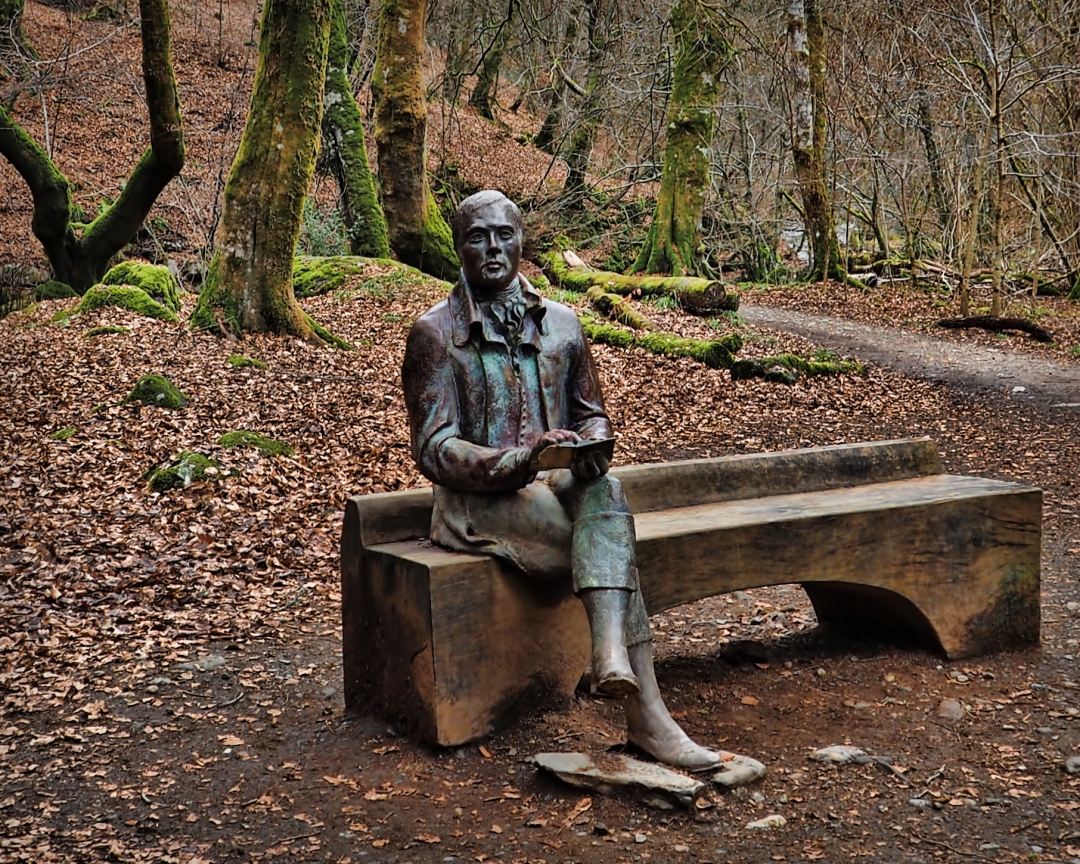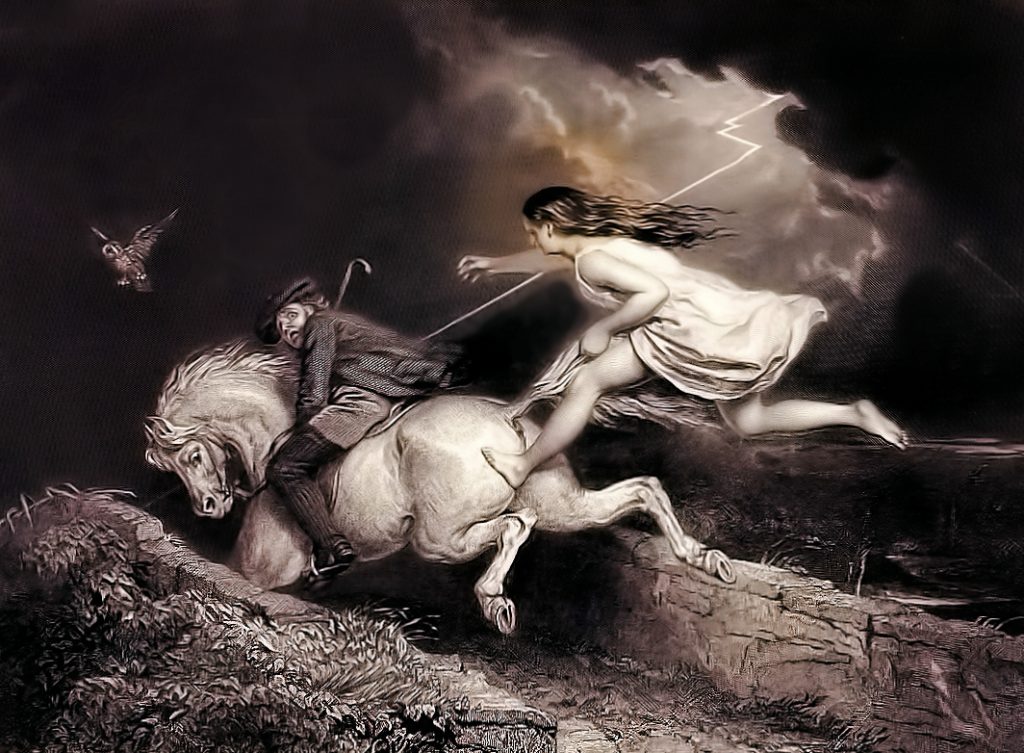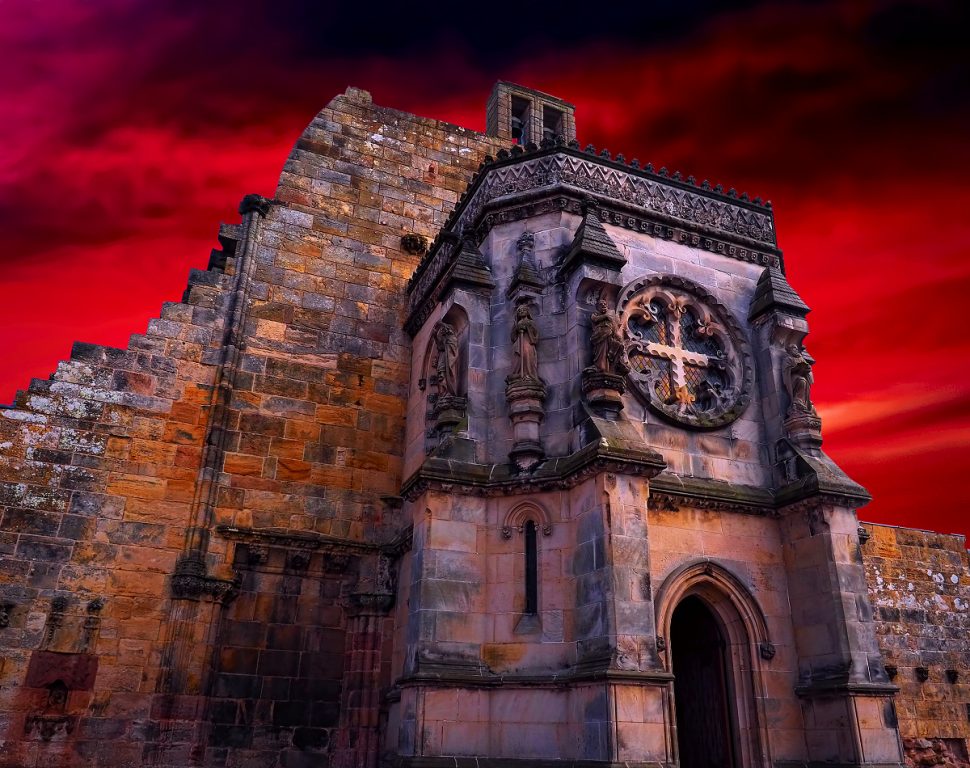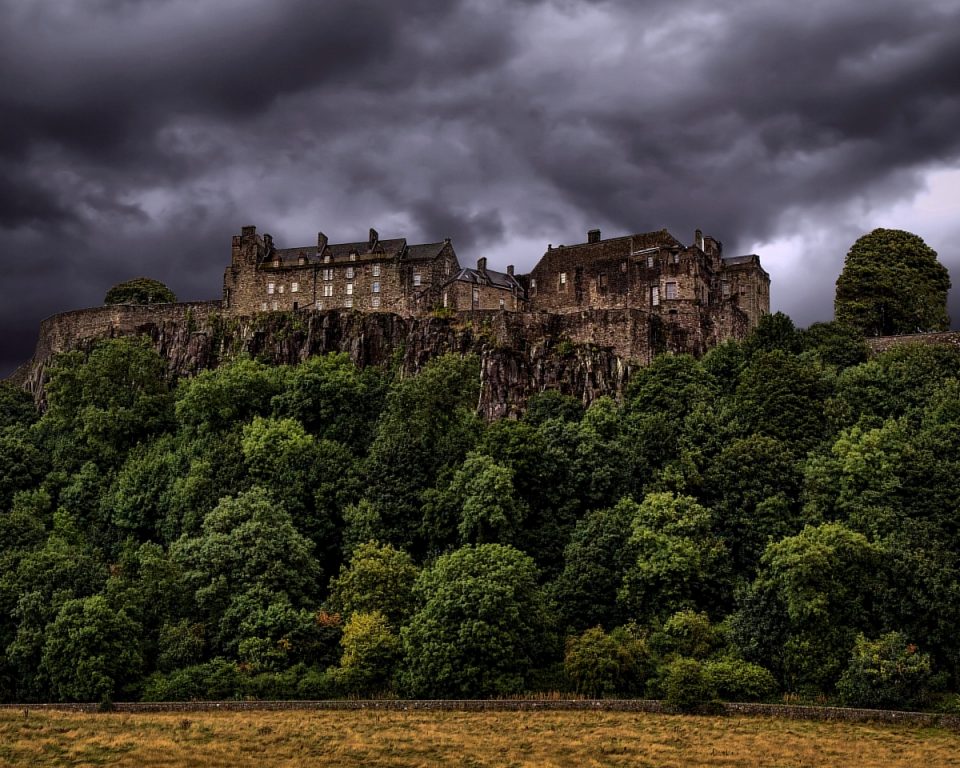Mystery! Intrigue! It began when I was researching out some information about Tam O’ Shanter. What I discovered was something which could have come straight out of a Dan Brown novel. First there was a ‘lost’ Robert Burns painting, thought once to have belonged to Sir James Shaw, one-time Lord Mayor of London. Then mysterious masonic symbols were discovered on the painting which led me on the trail of possibly one of Scotland’s greatest artists, Alexander Nasmyth who was a contemporary of Robert Burns. The men became firm friends and there is evidence that they visited Rosslyn together. Then I discovered that both men belonged to the same Masonic Lodge in Edinburgh. Looking further into the details of the Lodge I discovered that a certain Sir William Saint Clair Esq. of Rosslyn had a connection with that particular Lodge. So, what does it all mean?
The Shaw Burns
The painting caught the eye of Stephen Barnes when he saw it at an English auction house, covered in thick dust. Thinking it might be valuable, he took a gamble which paid off. He paid less than one thousand pounds for the picture which is now valued at two million pounds. The painting turned out to be a portrait of Robert Burns by Alexander Nasmyth. The picture is called the Shaw Burns because the Word ‘Shaw’ is inscribed on the back of the frame. Evidence points to it having once belonged to Sir James Shaw, the lord mayor of London from 1805.
Burns died when he was only thirty-seven years old, leaving a widow and a young family. After his death in 1796, the Lord Mayor, who was originally from Kilmarnock, became a benefactor to the Burns family, helping them to work and financially aiding the poet’s widow, Jean Armour. Perhaps this is small wonder as Sir James came from a similar humble Ayrshire farming background. He made his wealth as a successful merchant in London and there is evidence to suggest that he was a distant relative of the Bard.
It is likely that the painting was sold off in the 1830s to pay off Sir James’ debts accrued from a series of bad investments.
Masonic Symbols
After cleaning up the painting, Barnes discovered a series of symbols and letters not visible to the naked eye. They could only be seen close up and at certain angles. He got in touch with writer and Burns’ expert, Jerry Brannigan. Brannigan believes that the ‘hidden’ marks are a series of Masonic symbols. He believes the following symbols were found in the painting:
The Blazing star: A comet is found over Burns’ shoulder and is thought to be the Masonic symbol, the blazing star. Frequently the blazing star is associated with the letter ‘G’ or the Hebrew symbol ‘Yod’. Interestingly, Burns’ was born when Halley’s Comet was in the sky. Perhaps to someone who had a keen interest in the esoteric, as Burns was, it was likely that the Blazing Star had significant personal importance to him.
The letters ‘m a r a’: These letters are found next to Burns’ head and possibly refer to his rank as Royal Arch Mason. Burns was exalted a companion in the Holy Royal Arch Degree in May 1787 at St. Ebbe’s Lodge, Eyemouth.
Numbers of his forehead: Numerology is an important facet of masonry. This may also have been used to convey his status within Masonry.
Nasymyth’s Paintings of Burns
Alexander Nasmyth was born in the Grassmarket, Edinburgh on the 9 September 1758 and is recognised as being one of Scotland’s finest landscape painters. Perhaps, for the layman, his most famous work is his painting of Robert Burns. The original is found in the Scottish National Portrait Gallery in Edinburgh and was commission by the publisher William Creech for an engraving for a new edition of Burns’ poems, titled ‘Poem’s chiefly in the Scottish Dialect’. In a time when there was no way to reproduce paintings electronically, Nasmyth made several copies. One is now housed in the Kelvingrove Art Gallery in Glasgow and the other in the National Portrait Gallery in London. And then the fourth painting turned up…
According to Brannigan, similar mysterious letters and symbols appear in the other Burns’ paintings. These symbols are tiny: about one millimetre in height. They must have been painted under a magnifying glass with a single hairbrush. Why go to such great lengths to record these symbols?
Robert Burns and Alexander Nasmyth
Robert Burns arrived in Edinburgh on the 28th November 1786. Shortly afterwards he was introduced to Alexander Nasmyth by a common patron, Patrick Millar of Dalswinton. The two became firm friends and shared a love of nature and radical politics. This was deep within the Scottish Enlightenment, where Edinburgh was at the forefront of creativity and philosophical thought. On his trips to Edinburgh, Burns was a frequent visitor to Nasmyth’s studio. The pair would often walk together in the surrounding countryside.
Both men were Free Masons and attended the Canongate Kilwinning Lodge in Edinburgh, as did William Creech. In fact, the Kilwinning Lodge membership reads likes a Who’s Who of the Scottish Enlightenment movement. Members included Sir Walter Scott, Charles Darwin’s grandfather and James Boswell.
Robert Burns as a Free Mason
Burns was initiated an Entered Apprentice in Lodge St. David, Tarbolton on 4 July 1781, at the age of 23. Burns was elected “Depute Master “of the lodge of St James on 27 July 1784 at the ripe young age of 25. It is small wonder that Burns became a Mason as Ayrshire, where the poet was born, was one of the strongholds of Scottish Masonry. Kilwinning in Ayrshire is thought to be home to the oldest lodge in Scotland, if not the world and is thus styled The Mother Lodge of Scotland.
Masonry was to play an important role in his life. In 1786 Burns was is financial straits and embroiled in affairs of the heart. He had been offered a job in Jamaica as a bookkeeper on a slave plantation. He lacked the money for his passage and Gavin Hamilton, writer to the signet and a member of St. James’ Lodge, having heard some of Burns’ poetry, proposed that the Brethren of the Lodge should defray the cost of publishing them, suggested that he publish some of his poems as a way of procuring the needed funds. John Wilson a printer in Kilmarnock, agreed to publish his works. Wilson was also a Free Mason and 350 brother Masons signed up to buy a copy of the book. Encouraged by his success, Burns decided to stay in Scotland.
Masonry was to influence his ideals, and this is reflected in his work. Some of his works deal directly with Masonry such as ‘Adieu, A Heart-Warm, Fond Adieu’ or ‘Masonic Song’. Others, are influenced by Masonic ideals such as the idea of brotherhood found in ‘A Man’s a Man for a’ That’.
Robert Burns and Alexander Nasmyth and the Rosslyn Connection
According to James Nasmyth, son of Alexander Nasmyth and a painter in his own right, Robert Burns and Alexander Nasmyth walked from Edinburgh to Rosslyn Castle on the 13th of June 1786. His father took a sketch which the younger Nasmyth used the basis of a painting. However,r there is evidence that this event occurred in 1787 when Burns wrote his ‘Epigram At Roslin Inn’.
Apparently, after an all-night ‘socialising’ session, Burns walked from Edinburgh to Rosslyn, a distance of some six miles. His purpose was to see the sun come up at Rosslyn Chapel. The friends arrived in front of Rosslyn Chapel and the nearby Roslin Inn just as they became bathed in the reddish glow of dawn. Was there some significance about the sun rising over Rosslyn Chapel? Were the men merely curious about this mysterious building that is said to be full of masonic iconography, and had numerous tales and legends of Knights Templars and hidden treasure?
The desired deed done, Burns repaired to the Inn for breakfast. In appreciation for his meal he scratched a short poem on a pewter plate:
‘My blessings on ye, honest wife! I ne’er was here before; Ye’ve wealth o’ gear for spoon and knife- Heart could not wish for more. Heav’n keep you clear o’ sturt and strife, Till far ayont fourscore, And while I toddle on thro’ life, I’ll ne’er gae by your door!’
Rosslyn chapel would have been particularly significant to the two friends as there is a huge painting of Sir William Saint Clair of Rosslyn hanging in the Canongate Kilwinning Lodge. Saint Clair or Sinclair was an initiate of the Canongate Kilwinning Lodge and later became the first Grand Master of the Grand Lodge of Scotland. Sinclair came from a family that were traditionally the hereditary Grand Masters of the Masons of Scotland. King James II in 1441 appointed William Saint Clair, Earl of Orkney and Caithness, his heirs and successors for all time coming to be the patrons and protectors of the Masons in Scotland.
Interestingly, Brannigan suggested that Nasmyth had included a ‘hidden’ hooded figure of a monk in his landscape painting ‘A View of Edinburgh from the West.’ Brannigan feels that this may allude to the Templar Connection with Edinburgh.
So why would Nasmyth leave behind a series of masonic symbols in his paintings? What message was he trying to convey and to whom? What did Nasmyth and Burns know about Rosslyn Chapel? There is a Masonic saying about things being ‘hidden in plain sight.’ Who knows, the answer might be right in front of our noses.




